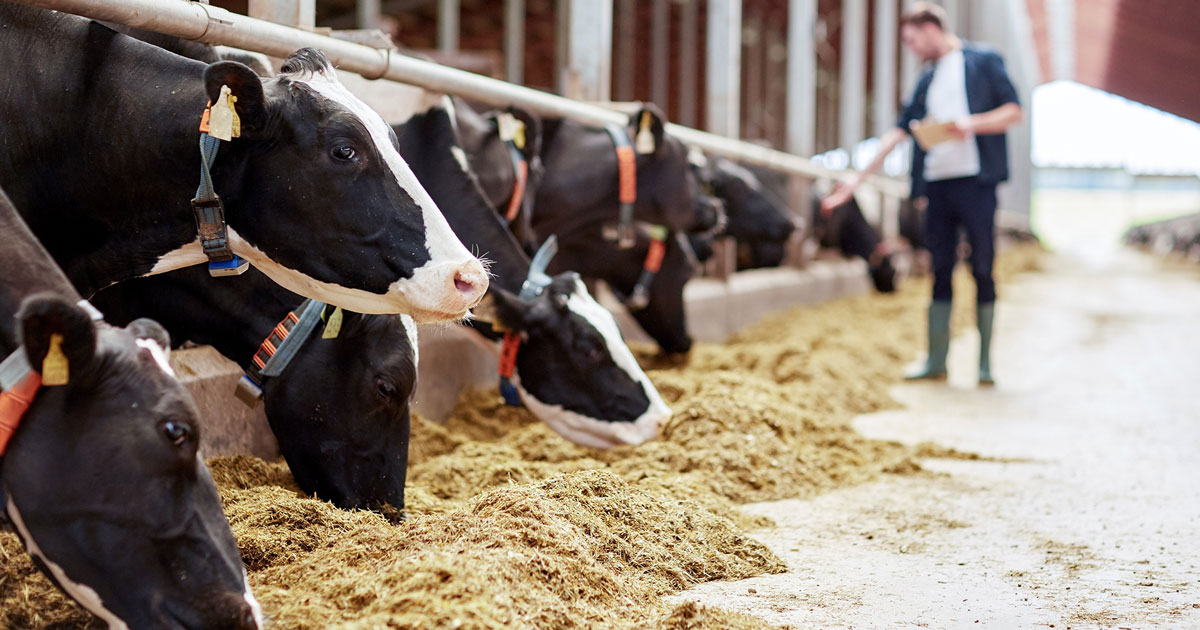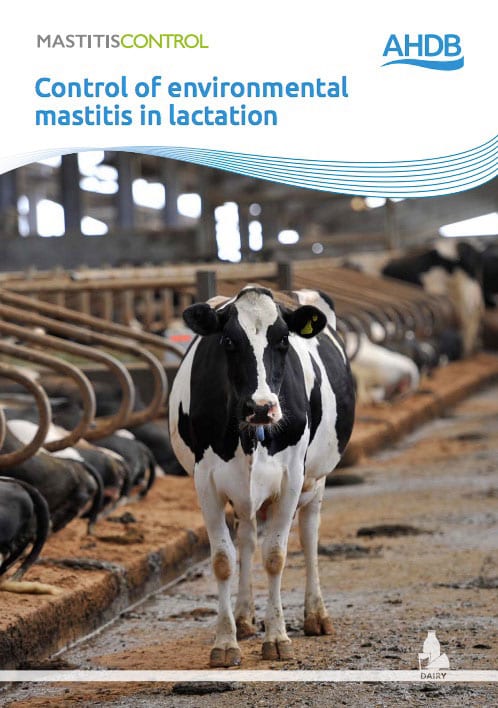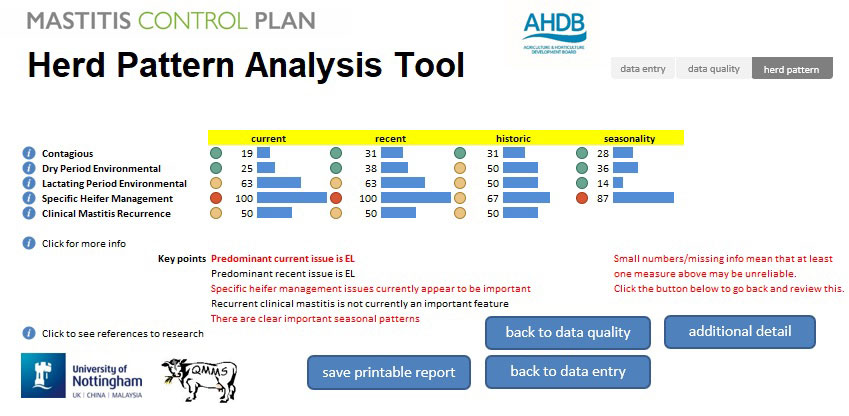16 Feb 2021
Mastitis control and prevention – including new initiative’s launch
Mastitis control has become increasingly important because of the rising concern regarding antimicrobial use on farms. Rebecca Nelson looks at control and prevention, including a new initiative to tackle it.

IMAGE: Syda Productions / Adobe Stock
Mastitis is a major endemic disease of dairy cattle, leading to major economic losses and compromised animal welfare.
The mean annual incidence of clinical mastitis remains high, with the most up-to-date study reporting an incidence of between 47 and 71 cases per 100 cows (Bradley et al, 2007). Mastitis control is paramount to reducing disease incidence, improving animal welfare, reducing associated costs, helping improve future sustainability of the dairy industry, and well as reducing the need for antimicrobial treatments for clinical cases and infected cows – and, therefore, reducing overall herd antimicrobial use.

Background
Antimicrobial usage, and antimicrobial resistance in the livestock sector, has received a huge amount of media attention as a result of the Government-commissioned O’Neill report (2015), which proposed the reduction in antibiotic use in food production along with restrictions on the use of antibiotics important for human health.
In response to the report, the Targets Task Force was formed by the Responsible Use of Medicines in Agriculture (RUMA) Alliance, with the main aim being to establish sector-specific targets for reduction, refinement or replacement of antibiotics.
Six dairy sector-specific targets were identified, with four of them directly being related to mastitis control. The remaining two were reduction of highest priority, critically important injectable antibiotics and the total milligram usage, with the target in the dairy sector of 21mg/population correction unit (PCU; RUMA, 2017).
Additionally, a detailed farm-level antimicrobial usage (AMU) study on British dairy farms reported that intramammary therapies were a major contributor to total AMU when measured as dose-based metrics, defined daily dose (DDD) and defined course dose (Hyde et al, 2017).
This has been previously reported in the Netherlands, with 68% of the average DDD calculated to be attributed to udder health problems (Kuipers et al, 2016). Mastitis incidence has a well understood influence on AMU. Therefore, mastitis control and prevention has a rising importance in reducing AMU and achieving dairy sector-specific RUMA targets.
Control measures
Mastitis control has primarily involved the implementation of the Agriculture and Horticulture Development Board (AHDB) Dairy Mastitis Control Plan (DMCP), which was launched in 2009. The launch was as a result of initial research showing a 22% reduction in the proportion of cows with clinical mastitis on farms where a structured mastitis control plan was implemented for 12 months, when compared to control farms without this structured plan (Green et al, 2007).
The DMCP is delivered by trained veterinary surgeons and consultants, and uses milk records, clinical records and on-farm questionnaires to identify mastitis patterns and origins of infection. A bespoke action plan is formulated highlighting the key areas of improvement on farm to reduce clinical mastitis and high somatic cell count (SCC) incidence.
As an example, implementation of the DMCP to a 600-cow dairy farm in 2013 focused on environmental infection during the dry period as the predominant epidemiological pattern on farm. Data monitoring showed a reduction in the rate of new cases of clinical mastitis in the first 30 days in lactation from more than 2 in 12 cows to less than 1 in 12 cows affected by the end of 2016 following herd-specific alterations to dry cow management.
Additionally, the fresh calver infection rate – the proportion of heifer and cows that had a somatic cell count of more than 200,000 cells/ml at the first milk recording within 30 days after calving – reduced from 19% at the end of 2013 to 12% at the end of 2016.
As well as a reduction in clinical mastitis rates and intramammary infections, antimicrobial use also reduced, from 40mg/PCU, and a DDD of 14mg/PCU to 26mg/PCU and a lower than 7 DDD (Breen et al, 2017a).

A key stage in the AHDB DMCP is the categorisation of the predominant mastitis infection pattern and likely origin of infection in the herd. It is important to identify the mode of pathogen transmission (environmental versus contagious), and the likely stage when new infections are occurring, during lactation or during the dry period.
The DMCP software that aids selection of management priorities relies on plan deliverers to select the category most applicable to the herd, such as dry period origin, environmental; lactating period origin, environmental or contagious mastitis infection (Down et al, 2016).
Correct pattern identification is key to allowing prioritisation of control measures and to ensure effectiveness of the plan. It is has been identified from feedback the initial stage of pattern identification is problematic for plan deliverers, and this is most likely to be a key barrier to further success of the AHDB DMCP.
The development of an automated pattern analysis tool will help overcome this barrier and will help assist the deliverers with this difficult decision-making process (Breen et al, 2017b).
New initiative
QuarterPRO is a new initiative, launched at DairyTech in February 2020 (https://ahdb.org.uk/quarterpro), designed as an entry-level initiative for UK mastitis control. The Quarter PRO approach is a three-step process that is performed on a quarterly basis:
- Predict the pattern – evaluation of the herd data and use of the pattern analysis tool (PAT) to identify the predominant mastitis infection pattern present.
- React using resources – bitesize, user-friendly resources are available to assist with mastitis control – select the correct resource based on the current mastitis pattern.
- Optimise ongoing control – identification of key management areas to be addressed and discuss changes to be made – and act.
The PAT tool is the latest free mastitis decision support tool, developed for AHDB Dairy by Quality Milk Management Services (QMMS) and the University of Nottingham. It is designed to be a quick and easy tool to use to allow rapid assessment of current mastitis patterns.

The following steps describe the process to take when using the PAT tool:
- Obtain a milk recording common data layer (CDL) file from the Cattle Information Service, National Milk Records or QMMS.
- Convert this CDL file using the free CDL mastitis data converter available as part of the QuarterPRO resources and create an analysis file.
- Open the PAT and import the analysis file made using the CDL converter tool.
- Check the data quality – complete SCC and clinical mastitis data over the past 18 months.
- Categorise your herd: contagious, dry period environmental or lactating period environmental.
To get the best results, 18 months’ worth of clinical mastitis and SCC data should be obtained; this time frame of data collection will allow for identification of seasonality. The PAT will categorise and score the data into one of the following three groups: contagious, dry period environmental or lactating period environmental.
The tool also takes into account the effects of heifers and/or recurrence and seasonality.
If, at this stage, the current situation on farm is complex, additional analysis of cell count or clinical mastitis data may be required to supplement the pattern tool output; for example, assessment of seasonality using new case rates or new cell count infection rates using analysis software, such as TotalVet or Interherd+. Concise resources are then available for the different mastitis patterns to support discussions with clients regarding farm-specific control strategies, and these are available as PDF downloads (for example, https://bit.ly/2viLBJ6).
Quarterly assessment of the data is important to monitor progress and to highlight any changes in the mastitis data (Green et al, 2018).
In this farm case example, the AHDB dairy mastitis pattern analysis tool highlighted the mastitis pattern to be predominantly environmental with lactational origin.
Discussions with the farmer regarding areas of focus were supported by the “AHDB control of environmental mastitis lactation” resource. Areas identified to improve were stocking rate, feed space allowance and bedding management.
These improvements were achieved on this farm by moving cows around in the sheds to reduce the amount of space for far off dry cows to allocate more space for the freshly calved cows. This rearrangement resulted in a reduced stocking density of 80% and increased feed space availability of 0.9m per cow, well above the recommended guidelines.
The frequency of fresh bedding application was increased to three times a day. This was achievable on this farm management wise due to the three-times-a-day milking.
Conclusion
The QuarterPRO initiative will provide a rapid approach to monitoring and improving udder health on a quarterly basis, while eliminating the time-consuming and challenging nature of the existing DMCP. The entry-level nature and accessibility of the programme will hopefully enable a large uptake within the profession and will promote use of existing DMCP-guided resources.
Where more detail is required, the DMCP remains a “gold standard” approach to structured mastitis control, and allows the level of detail that may be required to understand which control measures are likely to be important.
With the end result being to achieve a better control of mastitis, an improvement of mastitis incidence – and, in turn, a reduction in the antimicrobial usage on farm.
Acknowledgements
The author would like to acknowledge James Breen, Martin Green and Andrew Bradley.
